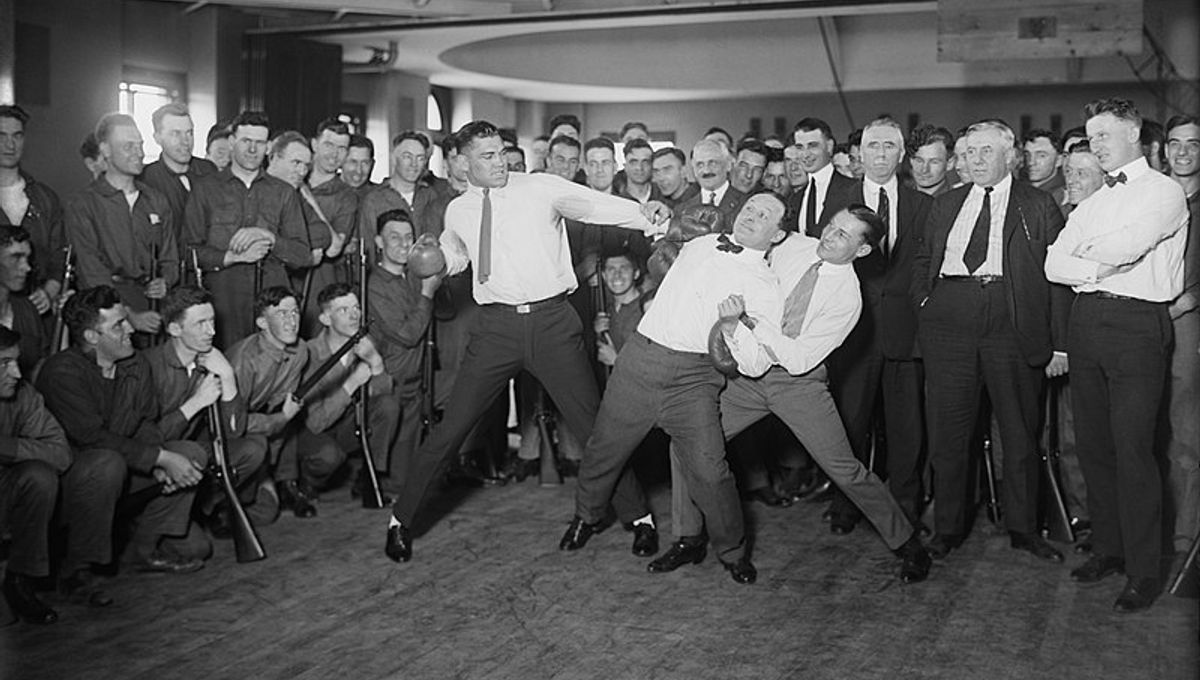
Harry Houdini led what you’d call a busy life, debunking spiritualists, starring in movies, and escaping from handcuffs, straitjackets, and water torture cells.
One feat he performed on the side, as if his CV wasn’t quite varied enough, was to allow people to punch him as hard as they could in the stomach. According to legend (based at least partly in fact), it was one of these punches that killed him on October 31, 1926.
Houdini was touring his escape act around the USA, when he broke his ankle during a water torture cell trick in Albany.
Despite this, he continued the tour and met a student named Samuel J. Smilovitch, who had approached Houdini with a sketch of him after a talk on spiritualism at McGill University. Houdini invited the student to meet him back stage after a show, where the supposed killer blow took place, dealt by a student friend of Smilovitch named Joselyn Gordon Whitehead.
Jack Price, a witness to the incident in Houdini’s dressing room, wrote about it in an excerpt that was later published in a book by Houdini’s friend Sir Arthur Conan Doyle. According to the account, the student asked Houdini whether it was true he could take punches to the stomach without them hurting him, before getting his permission to have a try.
“Thereupon he gave Houdini some very hammer-like blows below the belt,” Price wrote, according to Snopes. The student kept hitting Houdini, to the point that Price tried to intervene, but still the pummeling continued.
“Houdini stopped him suddenly in the midst of a punch, with a gesture that he had had enough. At the time Whitehead was striking Houdini, the latter looked as though he was in extreme pain and winced as each blow was struck.”
Houdini, according to Price, then said that he had not had time to prepare himself for the blows, which had been thrown at him before he could even stand up from the couch.
Houdini suffered severe abdominal pain later – which got worse over the following days – but continued to perform shows, barely making it through them. When a doctor finally saw him days later, he was diagnosed with acute appendicitis and told to go to a hospital immediately. Again, Houdini chose to do a show.
After this one, which he rushed and performed badly in, he returned to his hotel and continued to insist on not seeing a doctor. His wife, Bess, insisted on getting one however, and he was taken to surgery where it was discovered his appendix had burst, and he was now suffering from peritonitis, two years before the discovery of penicillin. His condition worsened, and on October 31 he died.
People – and the press – soon speculated that it was the blows to his abdomen that had caused the appendicitis which ultimately killed him. Whitehead was not charged with anything relating to Houdini’s death, and while we wouldn’t recommend being punched repeatedly in the stomach, it’s still stepping over the mark to say the blow caused his appendicitis.
Appendicitis following trauma is rare, with debate still going on “as to whether acute appendicitis following trauma is coincidental or causal”, according to one review. That same review, which looked at 381 papers on appendicitis, found 28 cases of acute appendicitis they believed were secondary to trauma ranging from traffic accidents to falls.
“Although rare,” they conclude in the paper, “the diagnosis of acute appendicitis must be considered following direct abdominal trauma especially if the patient complains of abdominal right lower quadrant pain, nausea and anorexia.”
While it is plausible that trauma could have caused appendicitis, it’s also possible that the timing was a coincidence. Houdini got punched in the stomach a lot more than most people, so had he had appendicitis another time it could easily have been attributed to a different punch. Snopes notes that the punch could have even prevented Houdini from seeking treatment, believing the pain to be from the impact rather than his condition.
In all likelihood we will never know for certain, though appendicitis secondary to infection is a lot more common than appendicitis caused by trauma, the mechanism of which we are still unsure of.
Source Link: How Did Harry Houdini Really Die?